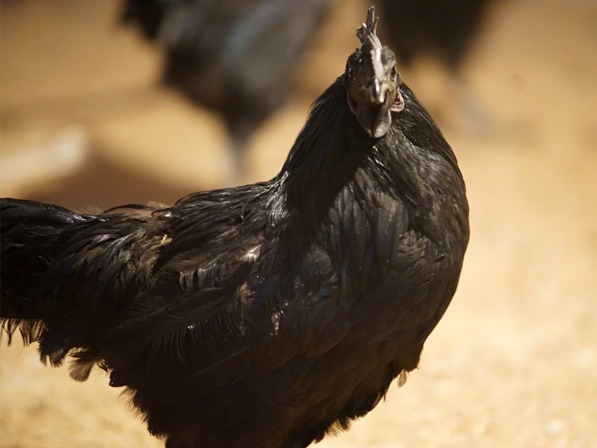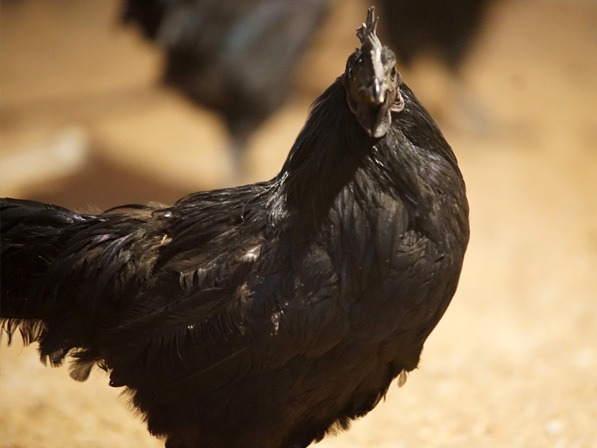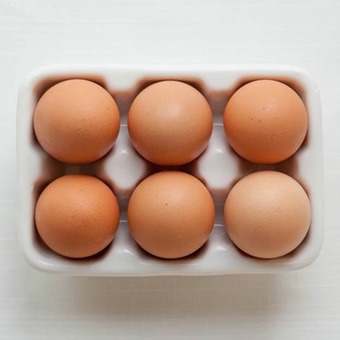Kadaknath Farming
This breed is a unique chicken breed for its outward and inward appearance as well as for its meat health benefits. The Kadaknath chicken breed is commonly called by locals as kali Masi for its black flesh. It is commonly found in eastern parts of Madhya Pradesh state in India. The breed is mainly found in the state of Madhya Pradesh and adjoining states of Gujarat and Rajasthan. Pure breeds of Kadaknath birds are now scarcely found in the tribal regions of Dhar and Jhabua districts of Western Madhya Pradesh. The birds survive well in hot semi-arid climatic conditions with temperatures ranging between 12° to 42° C. They thrive well in harsh growing conditions such as poor housing, poor management, and poor feeding environments. The chicken breed is well known mainly for its black meat taste, adaptability and believed to infuse vigor. Because of a group of natural pigments called melanin; the chicken breed body parts are completely black such as –legs, toenails, tongue, comb, and wattles, beak, bones, meat, and even the internal organs are dark in color. The other important factor for this chicken breed to be unique is due to its fat content, while in all other chicken breeds the fat content varies from 12 to 26%, Kadaknath chicken fat content is 0.70 to 1.05%. The breed population has sharply declined due to the high consumer demand and lack of commercial farmers.


Kadaknath Chicken Varieties
The pure breeds are reared by the Bhils, Bhillalas and other tribal (Adivasis) communities that dwell in the western regions of Madhya Pradesh. This breed is also found in native China and called as Silkie and found in native Indonesia and called as AyyamCemani. There are three main varieties of Kadaknath Chicken.
- Jet Black Kadaknath
- Golden Kadaknath
- Penciled Kadaknath
Kadaknath Chicken Farming Business:
As we know poultry farming is one of the oldest farming business and turning out to be more profitable in the present days. The Kadaknath chicken breed is native to the tribal communities of Dhar and Jabhua districts in Madhya Pradesh state. As the breed is famous for its black color and black meat chicken, commercial farming of Kadaknath chicken has successfully started in Andhra Pradesh, Tamilnadu, Telangana and Kerala states. The products of Kadaknath chicken such as its black meat, brown eggs, and Kadaknath chicks are highly in demand with large profit margins. The birds gain weight from 0.50 grams to 1.75 kg within a period of 107 to 115 days with a high feed conversation ratio yielding maximum profits.
Advantages of Kadaknath Chicken Farming
- The demand for the byproducts of Kadaknath chicken breed is very high.
- Meat taste, texture, and flavor are very good.
- The breed demand is high with a very high-profit margin as the pricing of its byproducts are sold at high rates in the market.
- The breed meat and eggs contain many essential vitamins, minerals, protein, amino acids.
- Contains vitamins C, E, B1, B2, B6, and B12.
- High levels of 18 essential amino acids along with niacin, calcium, phosphorous, ironm nicotinic acid and others that are required by the human body.
- The blood levels and hemoglobin levels in the human body can be increased due to the medicinal properties contained in Kadaknath meat.
- It has great importance in helping to treat and cure various medical problems such as a headache, post-delivery problems, nervous disorders, and asthma through Siddha and Homeopathy.
- Kadaknath breed chickens are hardy to many of the poultry diseases.
- In order to boost its commercial farming, many state governments are helping farmers by providing various schemes and subsidies to boost Kadaknath farming.
- Feed consumption is moderate compared to other poultry birds.
- Birds can easily grow and survive in low-cost food habitats.
- Chicks are highly disease resistant compared to other poultry.
- Kadaknath eggs and meat are a nutritious diet.
- Kadaknath chicks grow fast and grown-up is tasty and nutritious food.
- Kadaknath meat and eggs contain less fat compared to all other meat.
- Kadaknath chickens are well adapted to regions having scarce food and climatic conditions.
- It has the highest rate of protein content (more than 25%) compared with other chicken breeds.
Why Kadaknath Chicken Farming Business?

Kadaknath chicken meat has high medicinal values apart from nutritive values compared with other meat. Because of this, black meat chicken is very much in demand. This breed is very popular for its adaptability, disease resistance and for its distinctive meat taste. The Adivasis or tribal communities believe in its medicinal properties and use the blood in treating many chronic diseases. The bird’s meat acts as a vasodilator that helps in regulating the blood flow in the human body and thereby infusing vigor. This meat is also used in homeopathy in treating a particular nervous disorder. Kadaknath meat is effective in treating women’s sterility, abnormal menstruation, and assists in habitual abortions. Meat and eggs of these birds are rich in protein and highly nutritive especially for children and older people suffering from high blood pressure, the cholesterol levels are very negligible compared with other bird meats.
Feeding in Kadaknath Chicken Farming Business
In commercial breeding and farming, they can be given pre-starter broiler feed with maize crumbs in the first two month period. 20% protein diet can be given to birds once they cross two months. One can start feeding the birds with broiler starter feed followed by a regular feed depending upon the body weight and age. They eat a variety of foods from market waste to leafy vegetables, grass and etc, In open range farming, they know what they want and start feeding on small insects, seeds, grass, and other things.
| Ingredients | Brooder mash (0-8 weeks) in grams | Grower mash (9-19 weeks) in grams | Layer mash (20-72 weeks) in grams |
|---|---|---|---|
| Maize | 59.00 | 40.00 | 57.00 |
| Bajra | - | 10.00 | - |
| DORB | 4.00 | 23.80 | 5.00 |
| Soya Meal | 24.50 | 10.70 | 14.40 |
| Sunflower Meal | - | 7.00 | 7.00 |
| Fish meal | 10.00 | 6.00 | 9.00 |
| Mineral mixture | 2.00 | 2.00 | 2.00 |
| Shell grit | - | - | 5.00 |
| Salt | 0.50 | 0.50 | 0.50 |
| Methionine | - | - | 0.10 |
Housing Management in Kadaknath Chicken Farming Business
For optimum Kadaknath breeding and for-profits, Kadaknath housing must have a room temperature of 20° to 26° C and with 50% to 70% humidity. Birds can survive well in temperatures between 16° to 35°C. Kadaknath chicken is housed or reared in a litter system or in cages. Sheds must be free from natural predators such as cats, dogs, snakes, predatory birds, and rats. Shed and surrounding areas must be free from flies and mosquitoes. Sheds must have comfortable housing conditions along with adequate light and proper ventilation during all seasons. Before introducing chicks in the deep litter system, disinfect all watering equipment, feeders, and brooding equipment, spread around 2 to 4-inch clean litter material such as sawdust, wood shavings, chopped straw, and paddy husk on the floor. The floor must be flat with no sharp protruding objects or rocks. Sheds length can be of any size with a width not more than 30 feet wide. The center of the shed height can be from 10 to 15 feet in height and the sides should be 8 to 10 feet in height. Two-thirds of the side walls must be open with wire mesh and avoid side walls in a cage system. In the cage system, the height of the shed can 10 to 20 feet high and the height can vary depending upon the cage tier arrangement. The flooring of the house or shed must be of cement concrete. This will reduce disease problems and help in easy disinfection, maintenance, and cleaning, Depending on the farmer budget, poultry roof of the shed can be made of straw, coconut leaf or Palmyra leaf, asbestos, plastic or fiberglass, etc.
Brooder House
Prepare the brooder house by disinfecting before the chicks are introduced. Place cardboaNrodtifiocafti1o6ns Powered by iZooto inches height and 6 feet in diameter making a brooding area for the chicks to stay inside. Inside the brooding area cover the floor with several inches of dry husk, sawdust or peat moss. The brooding area or brooder house should be shielded from direct sunlight. For every 100 chicks require 250 W infrared lamps to keep the chicks warm. Divide the infrared lamps such a way each brooding house will have one light bulb. Avoid heating the air or the room temperature, but just the brooding area where the chicks stay. Each chick of one to eight days old must have six to seven inches of free space in the brooding house. Supply feed and water as soon as the chicks are introduced or arrived.
Grower House

Grower house is used to house egg laying type birds of ages between 9 to 20 weeks old. Prepare the grower house by cleaning and disinfecting the place. Grower house must be clean and dry before the birds are introduced. Flooring must be spread with about 4-inch litter material. Place sufficient waterer and feeders, grower house must have sufficient floor space, feeding space and water space for the birds to move around. To avoid diseases like coccidiosis, follow good litter management. The proper natural lighting of about 12 hours must be provided and no artificial light is required.
Egg Incubation in Kadaknath Chicken Farming Business
Kadaknath hen reaches maturity and starts laying eggs from sixth month onward. The hen lays eggs in two to three clutches, eggs are laid in two to three clutches with each clutch producing 25 to 40 eggs; thus, giving about 100 to 120 eggs in a year. Kadaknath hens are poor brooders. Losing one egg without hatching will be a big loss, ensure maximum hatching takes place; hence, collect all the eggs for artificial incubation and hatching. Provide sufficient nest boxes for hens to lay eggNsottifoicaatvioonisdPowered by iZooto lying on the floor. Farmers must collect eggs at least four times a day with clean and sanitized hands; this will help reduce egg contamination and microbial load. Eggs that are cracked or misshapen are not good for hatching and also very small or large eggs do not hatch well. Eggshells that are thin or porous do not hatch as well.
The five important factors for a successful incubation and hatching of eggs include Temperature, Humidity, Ventilation, the position of the eggs and turning of eggs. Temperature is the most critical concern during incubation. At physiological zero temperature, which means the temperature where embryonic growth starts developing, should be over 24°C and below this temperature, the embryonic growth is arrested. Maintain a temperature of 37.5°C for about the first 18 days and during the hatching period or last three days about 36.9°C.
Relative humidity during the first 18 days during incubation ranging between 55 to 60% and during the hatching period ranging between 65 to 75% this because to avoid dehydration of chicks. Fresh oxygen is required for the respiration of developing embryos; hence, good ventilation is important during incubation and hatching period. 5% reduction of hatching is observed for every 1% drop in oxygen. Carbon dioxide, which gets released through the shell during embryonic development should be maintained between 0.3 to 0.5% to avoid the reduction in hatchability. Place the large end of the egg up for the first 18 days, as the head of the chick develops at the large end of the egg near the air cell. While during the hatching period or the last three days, place the egg’s horizontal position, when the chick is ready to hatch its beak cannot break into the air cell to initiate pulmonary respiration. There are commercial incubators that turn the eggs automatically every hour, minimum of eight times in a day the eggs need to be turned to reduce embryo mortality.
Newborn Chicks Care
Chicks that are hatched must be placed in a clean and dry brooder. The brooding area must be maintained with a temperature between 35 to 37.5° C until they are fully feathered. Reduce the temperature gradually by 2.5° C every week until they are a month old.
Diseases in Kadaknath Chicken
This breed can tolerate summer heat and cold winter stress and thrives well under limited food resources and minimal management conditions. The birds are hardy and exhibit an appreciable degree of resistance to diseases compared to other poultry birds and exotic fowl breeds. ANvotoifiidcations Powered by iZooto overcrowding of chicks or birds in the brooder shed to prevent coccidiosis disease.